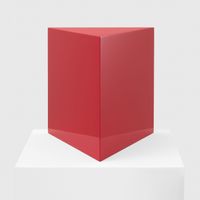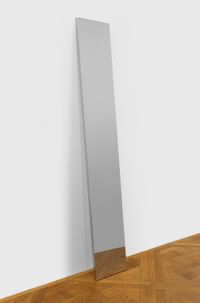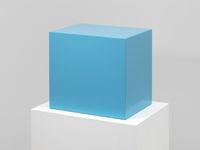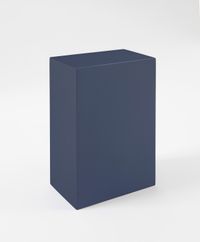In 1966, McCracken developed a signature sculptural style: the plank: a narrow, monochromatic rectangle, which leant at an angle against the wall, simultaneously resting on the floor, and thus combining both painting and sculpture. He soon began to be associated with 'Finish Fetish'; although his works were all meticulously handcrafted—a process that included spray painting, sanding, and polishing— they look like they were machine-made. This was exactly what McCracken aimed at: reflection above all. For him, this mirroring was about beauty. It was about redefining sculpture and making the viewer a part of it.
Read MoreMcCracken's sculptures were shown in nearly all the major sculpture exhibitions of the 1960s, such as Primary Structures (1966) at the Jewish Museum and Art of the Real at the Museum of Modern Art (1969). Concerned with issues of light and colour, his planks strike the viewer with their monolithic simplicity and lustrous effect achieved by their high-gloss finish. Inspired by the colours of Los Angeles car culture, they transform the space around them, reflecting their surroundings.
McCracken's sculptures fill the space with their totemic, religious presence. They are complex and simple at the same time, using colour as 'material' that takes the viewer into another dimension. But McCracken was never interested in the ordinary. After the 1980s, McCracken began to experiment with more complicated geometric forms. He left rectangular planks behind, and moved towards figures with crystalline angles, aiming to give different 'personalities' to his sculptural forms.
From 1971 to 1972, McCracken worked on a series of oil paintings based on Hindu and Buddhist mandalas, which were only exhibited for the first time in 2011. When he worked as a teacher, during the 1970s and 80s, his works received little critical attention. It is only after 1985 when the next generation of dealers, gallerists, and curators came about that his works were given their due.



